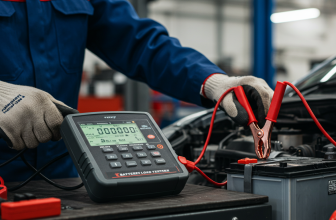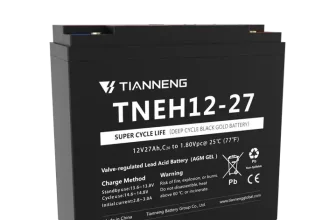Battery acid, an essential ingredient in the functioning of many
batteries, is a term commonly used to refer to the acid electrolyte in a
battery. Typically, this consists of a variety of chemicals, including
sulfuric acid or potassium hydroxide, that are key to the transfer of
energy within the battery. The choice of battery acid can vary based on
the battery’s design and intended use. From kick-starting our cars each
morning to powering our smartphones and laptops, battery acid plays a
vital role in everyday life. Remember, however, that despite its
widespread use and function, it is a corrosive substance and should be
handled with caution.
Importance of
battery acid in everyday life
Battery acid plays an integral role in our daily lives, often without
us realizing it. So much of modern life revolves around the use of
batteries – from our cell phones and laptops to our cars and home
utilities, such as smoke detectors and remote controls. The battery acid
within these devices is largely responsible for their functionality. It
is the driving force behind the electrical energy that powers these
essential tools. By understanding more about battery acid, we gain a
better appreciation for this invisible yet vital component in many
elements of contemporary living.
What Is Battery Acid?
Definition of battery acid
Battery acid, also known as electrolyte, is a liquid substance that
conducts electricity within a battery. It’s an essential component of
many battery types, including standard lead-acid car batteries and many
rechargeable batteries. Primarily composed of sulfuric acid and water,
battery acid performs a crucial role as the medium that allows the flow
of ions between the positive and negative ends of the battery. When a
battery is in use, the electrolyte initiates a chemical reaction that
produces electrons, creating the electric charge that powers our
devices. In essence, without battery acid, many of our everyday
electrically powered devices would not function.
Role of battery acid
in battery operation
Battery acid plays a pivotal role in the operation of a battery,
serving as the electrolyte in a battery system. An electrolyte is a
substance that conducts electricity when the battery is in use. It
facilitates the flow of electric charge between the cathode and anode.
Essentially, the battery acid enables the chemical reaction to take
place, which in turn generates electric power.
In a discharged state, battery acid allows ions to move between the
positive and negative plates. This helps to create a steady stream of
electrons from the battery’s negative terminal to its positive terminal,
ultimately powering the device it’s connected to.
The battery acid also assists in preserving the charge in a battery,
aiding in its storage capacity. That’s why charged batteries can hold
and supply power even when not in use for quite some time.
Overall, without battery acid, batteries would be unable to store or
supply power, making the role of battery acid in battery operation
fundamentally crucial.
Types of Battery Acids
Sulfuric acid in lead-acid
batteries
Description and
uses of lead-acid batteries
Lead-acid batteries are one of the most common types of batteries
used today, with a wide range of applications. They were invented in the
mid-19th century and have since been employed in various sectors due to
their reliability, cost-effectiveness, and energy capacity.
These batteries can typically be found in automobiles for starting,
lighting and ignition (SLI), uninterrupted power supply (UPS)
subsystems, and other devices that need a significant amount of power
that can be used over a longer duration. Lead-acid batteries are
available in different shapes and sizes, tailored to fit a variety of
uses.
The advantages of lead-acid batteries extend beyond just their energy
capacity. They also have a high surge current capability, meaning
they’re able to provide a high amount of power in a short amount of
time. This function is especially crucial in applications such as
starting an engine. Lead-acid batteries can also be recycled, making
them less of a burden on the environment than some other types of
batteries.
Accompanied by these broad applications, lead-acid batteries play an
integral role in our day-to-day lives, even in ways we may not always
realize. These sturdy, reliable batteries ensure that many of the
devices and tools we rely upon are powered up and ready when we need
them. Whether in our cars, providing emergency power for businesses, or
supporting critical hospital equipment, lead-acid batteries prove their
value every day.
Role of sulfuric acid
in these batteries
Sulfuric acid plays a fundamental role in the operation of lead-acid
batteries, with its primary purpose being to serve as an electrolyte. An
electrolyte is a medium that allows the flow of electrical charge
between the battery plates. In the charged state, the battery contains a
diluted concentration of sulfuric acid and lead dioxide; when the
battery discharges, the sulfuric acid reacts with lead dioxide to
produce electricity, creating lead sulfate and water in the process.
The presence of sulfuric acid within a lead-acid battery is crucial
because, during the discharge process, the lead active material is
transformed into lead sulfate by acid from the electrolyte. This process
is reversed during charging, where lead sulfate and water are
transformed back into lead and sulfuric acid. This cycle can be repeated
many times; however, over time, some lead sulfate does not convert back
into lead and sulfuric acid, thus leading to the gradual weakening of
the battery over time.
The sulfuric acid concentration in the electrolyte also acts as an
indicator of the battery’s charge state. A higher concentration
signifies a higher state of charge. This property is used by some
battery chargers to accurately determine when to stop the charging
process. In conclusion, sulfuric acid not only facilitates power
generation in lead-acid batteries but also plays an essential role in
the battery’s overall lifecycle and functionality.
Potassium
hydroxide in nickel-cadmium batteries
Description
and uses of nickel-cadmium batteries
Nickel-cadmium batteries, often abbreviated as NiCd, are rechargeable
batteries that present themselves as a reliable power source due to
their durability and consistent performance across diverse conditions.
They were first developed in 1899 by the Swedish inventor Waldemar
Jungner and have been widely used in numerous devices and applications
since the mid-20th century.
One of the main uses of nickel-cadmium batteries is in various
cordless tools like drills, saws, and more. The ability of these
batteries to deliver high currents continuously makes them suitable for
power tools that demand short bursts of energy. The batteries are
commonly used in emergency lighting and medical equipment as well due to
their highly dependable discharge rates. They also found their place in
several space missions and military applications because of their
resilience to tough environmental factors. Furthermore, NiCd batteries
are implemented in some sectors of renewable energy storage,
particularly solar and wind power.
Role of
potassium hydroxide in these batteries
Potassium hydroxide, also referred to as KOH, plays a critical role
in the operation of nickel-cadmium batteries. It serves as the
electrolyte in these types of batteries. Simply put, it is the medium
that allows for the movement of ions between the nickel and cadmium
plates inside the battery, a process which is crucial for the production
of electricity.
In a fully charged nickel-cadmium battery, the negative plates
contain cadmium hydroxide while the positive plates contain nickel
hydroxide. When the battery is discharged, both the cadmium and nickel
plates react with the potassium hydroxide electrolyte. This reaction
produces water along with other compounds, and it also generates
electrons, which then produce an electric current.
Consequently, the presence and maintenance of potassium hydroxide in
these batteries are essential for their efficient function. It’s a key
player in the chemical reactions that generate the battery’s power. It’s
important to note that while it facilitates the energy production
process, potassium hydroxide is not actually consumed in the reactions.
Therefore, it remains in the battery for its lifespan, continually
enabling the energy generating reactions.
Other types of
battery acids and their functions
Beyond sulfuric acid and potassium hydroxide, there are several other
types of battery acid utilized in different types of batteries, each
serving its own unique function. Lithium-ion batteries, for example,
often employed in smartphones, laptops, and electric cars, use a lithium
salt in an organic solvent as the electrolyte. The high energy density
and rechargeability of lithium-ion batteries can be attributed to the
reaction of this acid.
Alkaline batteries, frequently found in remote controls and toys, use
a potassium hydroxide solution as the electrolyte. It allows the flow of
ions, which is essential for the battery to provide electricity.
Zinc-carbon batteries, typically utilized in low-drain electronic
devices like wall clocks and radios, use a combination of ammonium
chloride and zinc chloride as the electrolyte. This acidic solution aids
in conducting electricity by moving ions between the zinc and carbon in
the battery.
Nickel-metal hydride batteries, an improvement over nickel-cadmium
batteries, use a potassium hydroxide solution as the primary
electrolyte. These batteries are commonly found in hybrid cars, due to
their ability to be recharged many times and their minimal impact on the
environment in comparison to other batteries.
The role of the aforementioned battery acids is indispensable, as
they facilitate the movement of ions from one electrode to another,
enabling the creation, storage, and discharge of electrical energy in
batteries. Each type is engineered for different uses, providing varied
amounts of power, lifetimes, and environmental impacts.
Safety Measures for
Handling Battery Acid
Potential dangers of battery
acid
Battery acid, particularly sulfuric acid, poses serious threats to
human health, property, and the environment if mishandled or not treated
with the respect it demands. Its corrosive properties can lead to severe
skin burns or eye damage, as well as, when inhaled, affecting the
respiratory system. Moreover, if accidentally ingested, this acid can
result in violent illness or even death.
Contact with battery acid can also lead to the damage of other
materials. Metals can corrode and organic compounds can be dramatically
altered. In addition, it’s worth noting that a chemical reaction can
take place when battery acid comes into contact with some substances,
often resulting in the production of heat, flames, or toxic fumes that
can cause further harm.
Finally, batteries that have been damaged or improperly handled may
leak acid or even rupture, leading to potential explosion risks and
consequent dangers. Therefore, the handling of battery acid should
always be done with caution and the risks must be acknowledged and taken
seriously.
Urgency
of correct disposal and treatment of battery acid
Battery acid, due to its corrosive and toxic nature, requires careful
disposal and treatment. Not only can it harm humans and animals, but it
can also have a damaging effect on the environment. Improper handling of
battery acid may lead to leakage, which has the potential to contaminate
soil and water bodies, hence affecting entire ecosystems.
Households or industries should never discard batteries with regular
trash or pour battery acid into the drain. Not only is this harmful to
the environment, but it is also illegal in many jurisdictions because of
the environmental damage it can cause. Utilizing the suitable disposal
and recycling facilities is of utmost necessity.
People working near these substances should be quickly trained on the
correct method for disposing of them. Most areas have hazardous waste
collection sites where you can safely dispose of battery acid and other
similar materials.
During the disposal and treatment process, always ensure to use
protective clothing and equipment, such as gloves, goggles, and an
apron. Battery acid should always be handled in a well-ventilated space
to avoid the risk of inhaling toxic fumes. Following these precautions
can help manage the risks associated with battery acid.
Safety
measures to take when handling battery acid
Handling battery acid requires utmost care due to its corrosive and
toxic nature. Here are a few safety measures to ensure risk-reduction
and safe practice when handling this substance:
- Personal Protective Equipment (PPE): Always use gloves
(preferably rubber), protective eyewear, and clothing to prevent direct
contact with the skin and eyes. This will prevent any chemical burns or
irritation caused by the acid. - Ventilation: Battery acid can release harmful gases, which could
be dangerous when inhaled. Thus, it is essential to operate in a
well-ventilated area, minimizing exposure to harmful gases. - Proper Storage: Battery acids should be stored in acid-resistant
and tightly sealed containers. These containers should not be exposed to
extreme temperatures and should be kept out of reach from children and
pets. - Use the Right Tools: Consider using tools like acid-resistant
funnels, drip trays, and battery carriers to avoid accidental spillage.
Avoid using any tools with metal parts as battery acid may react with
it. - Emergency Procedures: Be prepared for accidents. Save the number
of a poison control center and keep a first-aid kit nearby. In case of
an accidental spill, use a neutralizing agent like baking soda to
neutralize the acid, then thoroughly clean the area with water.
Remember, safety should never be compromised when dealing with
battery acid. These measures will ensure you’re protected from the risks
associated with battery acid interaction, ultimately ensuring your
safety and the safety of those around you.
Effects of Battery
Acid on the Environment
Harm caused
by improper disposal of battery acids
Improper disposal of battery acid contributes significantly to
environmental pollution. When batteries decay in landfill sites, battery
acid can leak out, contaminating the soil and groundwater. This leakage
can potentially seep into the water supply, with severe implications for
humans, animals, and plant life.
Battery acid contains heavy metals like lead and cadmium that are
non-biodegradable, and their accumulation in the environment can have
catastrophic effects. Lead is particularly detrimental, as it can affect
the nervous system, impair physical and mental growth in children and
cause various cardiovascular and kidney diseases. Cadmium, another
common element in battery acid, is classified as a human carcinogen and
can have serious impacts on the kidneys and respiratory system.
Also, the sulfuric acid and potassium hydroxide used in battery acid
can directly affect aquatic life by causing water acidification. This
disrupts the pH balance of water bodies, significantly affecting the
survival of aquatic species.
Therefore, the improper disposal of battery acid poses grave threats
to our environment and biodiversity, emphasizing the need for
responsible and environmentally friendly handling and disposal
practices.
Measures
for environmentally friendly handling and disposal of battery acids
Proper handling and disposal of battery acids are key to minimizing
their impact on the environment. A highly stressed area is recycling,
where used batteries are taken to designated facilities to retrieve
valuable materials, appropriately treating and disposing of the
remaining waste.
Several types of batteries can be returned to the selling point or
special collection boxes in public areas, a prime example being
lead-acid batteries. Reclaimers crush these batteries into nickel-sized
pieces and separate the plastic components. They then put the remaining
battery pieces into a vat, where the lead and heavy materials fall to
the bottom. The plastic rises to the top. At this point, they can
collect the plastic material, wash and dry it, and send it to a plastic
recycler. The lead-based materials are cleaned and heated until the lead
melts. The molten lead is then poured into mold to create ingots, which
can be used in the production of new batteries.
For smaller batteries, like those found in mobile devices, you can
usually find suitable disposal containers in electronics retailers. Be
sure not to throw these types of batteries in the regular trash, as they
can cause harmful chemical leaks in landfills.
In businesses and industries that regularly use or dispose of
batteries, a battery management plan might be implemented. This would
include procedures for storing used batteries, safety measures for
handling them, and details on how to prepare spent batteries for
transportation to a recycling facility.
Education is also a crucial element in ensuring environmentally
friendly disposal of battery acids. Informing consumers and businesses
alike about the potential environmental hazards of improper disposal and
the correct ways to get rid of used batteries can go a long way in
safeguarding our environment.
By employing these measures, we can minimize the environmental impact
of battery acid, thus contributing to a greener and healthier
planet.
Conclusion
Recap of the central points
covered
Battery acid is a vital and indispensable component of many power
sources used daily. We unwrapped its nature, delving into the fact that
not all battery acids are similar – with sulfuric acid playing a
significant role in lead-acid batteries, and potassium hydroxide
dominating in nickel-cadmium ones. It’s this very acid that enables
batteries to function, by facilitating the necessary chemical
reactions.
As much as battery acids are essential, they’re not without risks.
The potential dangers they pose when mishandled were underscored,
emphasizing the need for safe and prudent handling and disposal
procedures. It was also drawn to the light that the environment is not
immune to the perils of battery acid – improper disposal has profound
harmful environmental effects, warranting eco-friendly measures.
In essence, the intricate world of battery acid is brimming with
tales of science, caution, and environmental responsibilities. The
importance of this knowledge cannot be understated, particularly in our
technologically saturated age.
Final
insights into the relevance and importance of understanding battery
acid.
Understanding battery acid is not just crucial for those involved in
the manufacturing or handling of batteries, but also the common user.
Unawareness about the nature of these chemicals can lead to
unintentional mishandling, which can pose serious safety hazards. On a
larger scale, improper disposal of batteries could lead to environmental
damage.
Recognizing battery acid as a key component in powering many of our
devices reminds us to give it the due importance. We rely heavily on
batteries in our daily life; therefore, a basic understanding of their
operation, and the role played by battery acid, is beneficial. It can
alert consumers to the potential dangers related to battery acid and
help them make safe decisions.
Moreover, the knowledge encourages environmentally responsible
practices, contributing to the conservation of our ecosystem. It prompts
us to think about the life cycle of the products we use and the impact
they have on the world around us once they’ve served their purpose.
In conclusion, understanding battery acid aids in safety, promotes
sustainable practices, and contributes to an informed society capable of
making conscious choices in utilization and disposal of batteries.







